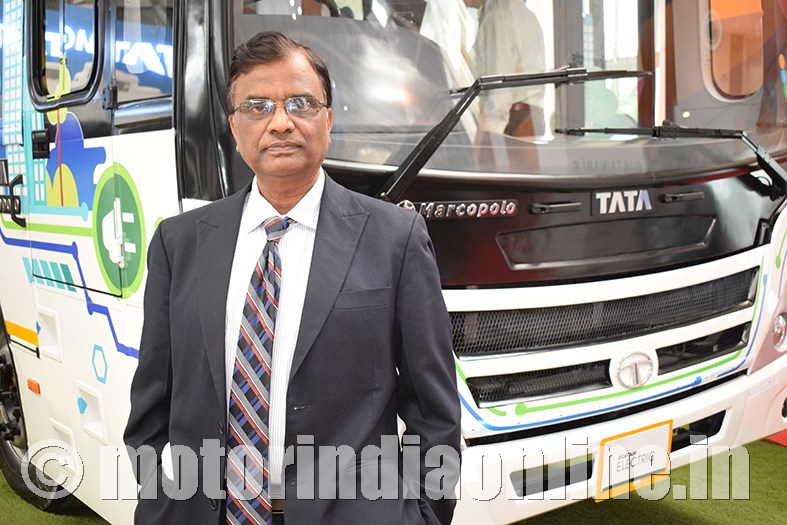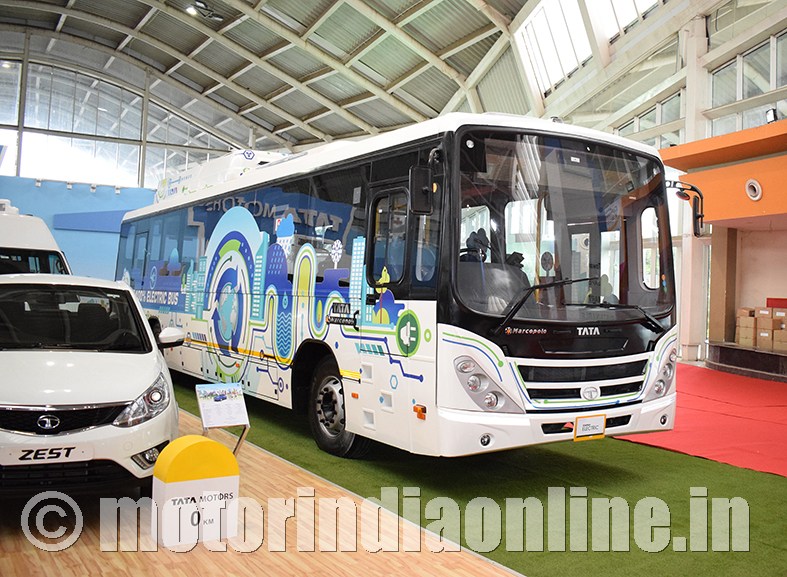“Developed countries started formulating safety regulations at least 10 to 15 years ahead of India. In the last 14 years, India leapfrogged with the promulgation of various safety regulations. The Reverse Parking Assist System (RPAS) would be mandated for various categories of vehicles including buses and is likely to be applicable from 1st April 2018. The emergency button and Vehicle Location Tracker are mandated in Public Service vehicles from 1st April 2018. There is no doubt that the systems such as mirror cameras, active cruise control, auto emergency braking and lane assist will improve the safety of the vehicle and pedestrians. However, these systems require certain infrastructure,” reveals Dr. A.K. Jindal, Vice President & Head Engineering (CVBU), Engineering Research Centre, Tata Motors Ltd., Pune, sharing his observations on the above topic.

Excerpts:
SAFETY IN TRUCK SEGMENT – SCV TO M&HCV
Mandatory and other safety requirements
Our commercial vehicles are currently provided with the mandatory and other safety features such as ABS (Anti-lock Braking System), Rear Underrun Protection Device (RUPD), Side Underrun Protection Device (SUPD), Front Underrun Protection Device (FUPD), Driver & Co-Driver side mirrors, Wide Angle Mirrors, Close promixity mirrors, Speed Limiting Device/Function (SLD/SLF), etc. Furthermore, our cabins offered in all commercial vehicle segments fulfil all mandatory requirements as per AIS (Automotive Industry Standards) notified by GOI for interior projections, survival space, wiping system, field of vision, safety glasses, etc. Apart from these, we also provide safety features which are non-regulatory requirements such as side impact protection beams and full-frontal crash requirements to improve safety of the vehicles. To avoid safety issues due to the fatigue of the driver, we provide features such power assisted steering with tilting and telescopic arrangements, comfortable seats, brake and clutch operation with less effort, automatic slack adjuster for brakes etc. Further to this, we also provide sleeper cabin in our long-haul trucks to eliminate the driving fatigue.
In addition to the above, we are also getting ready for with few advanced safety technologies such as Electronics Stability Control (ESC), Collision Mitigation System (CMS), Lane Departure Warning System (LDWS) and Anti-Roll Back (ARB) which will further enhance the vehicular and pedestrian safety on the road.
Measures for reducing accidents on road
While improved vehicle designs can contribute substantially to improved safety, the very heterogeneous nature of traffic as well as high degree of indiscipline, lack of trained drivers, lack of education and training of all the people involved in running, maintenance and upkeep of the vehicles are key influencing factors responsible for higher number of accidents on Indian roads.
Hence, enough awareness on the road safety should be in place and there is an immediate need for the defensive driving on our roads. Enforcement of safety standards and discipline on road is the emergent need. Deployment of advanced driver assistance systems such as driver health monitoring, lane departure warning, collision mitigation system, telematics etc., will further enhance the highway safety.
Safety apprehension at higher road speeds
While increasing the current speed to 140 kmph, the discipline also should be brought in place to limit the entry only for safer vehicles. Further to that, the person driving the vehicle needs to follow the complete set of traffic rules and regulations without any violations. To ensure the above, there must be a monitoring mechanism on the highways. Some of the advanced driver assistance systems should be made mandatory in addition to the current safety systems to enhance safety during high speed driving. High speed driving during night time should be seriously considered.
SAFETY IN BUS SEGMENT
Mandatory and other safety requirements
Our passenger vehicles come equipped with the following safety features: Anti-lock Braking system compliance for M3 vehicles (passenger vehicle more than 5T GVW), Speed limiter compliance (Max speed of the vehicle limited to 80 kmph), Tyre Pressure monitoring system(Optional), Roll over and stability compliance, EBS (Electronic Braking System), Door interlock system with vehicle motion, Reflective tapes to identify during the night, Warning triangle at the front of the vehicle, Multiplexing, Fire Retardant materials, Fire Detection & Suppression system, ITS (Intelligent Transport System), Gas leakage detection system (for CNG Buses), Main Isolator Switch in driver cabin, Seat belt for the driver and passengers, Mega Fuse 400 A to protect starter ckt, High abrasion resistance cables to avoid starter cable short ckt, Emergency hooter inside bus, Regulatory compliance for Use of CMVR approved safety components, i.e., RVM, Lights, Wiper and reflective tapes.
Apart from the above features, our vehicle layout has been modified to segregate electrical system and fuel system, provision for specific tapping point for body builders to tap electric supply, vehicle motion is restricted if parking brake is applied to reduce brake drum heating, and Disc Brake is provided at front for enhanced safety.
While we offer provision for all the above features, they are subject to applications and customer requests and may not come across as a standard fitment in all vehicles.
Fire hazards safety features
To control mishaps due to fire, the following safety features are included in our buses: Use of Fire Retardant materials, Fire Detection & Suppression system, Gas leakage detection system (for CNG Buses), Main Isolator Switch in driver cabin, Mega Fuse 400 A to protect starter circuit, High abrasion resistance cables to avoid starter cable short circuit, Emergency hooter inside bus, Regulatory compliance for Use of CMVR approved safety components, i.e., RVM, Lights, Wiper, reflective tapes, Vehicle layout modified to segregate electrical system and fuel system, Tyre Pressure monitoring system, EBS (Electronic Braking System), Multiplexing, Specific tapping point for body builders to tap electric supply and Restricted vehicle motion if parking brake is applied to reduce brake drum heating.
For evacuating passengers, safely in the shortest possible time, we have the following features:
- Emergency declaration switch-To be operated by the driver / co-driver to activate an Audio hooter and Visual red blinking light inside and amber light outside the bus to declare an emergency for speedy evacuation of the passengers.
- A Minimum of 2 emergency exits are provided in the form of either emergency door / Window / Roof hatch for speedy evacuation. We also provide hammers on emergency window and additional long hammer in driver area to brake rear /side window in case of emergency. We also provide Pictograms indicating a required action to be taken by the user for operating the equipment or control device in photo-luminescent material.
Light-weighting necessity and trend
The light-weighting for our trucks and buses are handled in two ways:
- i) Continually optimising the overall weight of various aggregates for reducing the kerb weight of the vehicle and or with an alternate design.
- ii) Use of alternate lightweight materials such as high strength steels and composite materials in place of conventional materials. We are in a continuous engagement with our technology and vendor partners for this.
These measures are required not only for fulfilling increasingly stringent fuel efficiency norms but also for meeting the exacting demands of customers, STUs and fleet operators, etc.
